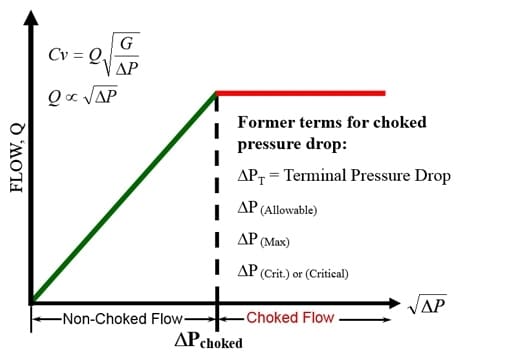ls valve covers
valve covers
edelbrock valve covers
corvette valve covers
Blocking flow is defined as a point at which increasing the pressure drop (△P) while maintaining a constant inlet pressure (P1) will not result in a further increase in flow.
The basic liquid flow equation shown in the diagram above tells us that the liquid flow through the control valve is proportional to the square root of the pressure drop. The green part of the graph in Figure 1 graphically shows this simple relationship. (Note that the scale of the horizontal axis is the square root of the pressure drop.) This linear relationship is not always correct. When the pressure drop is increased by reducing the downstream pressure, the flow reaches a point where it no longer increases. Once this happens, the additional increase in pressure drop through the valve does not result in additional flow, and this flow is called blockage. Here we will call it the limiting or suffocation pressure drop ΔPchoked to comply with the latest version of the IEC and ISA control valve estimation equation standards. (The two standards are technically the same.) Before the 2011 edition of the IEC valve diameter equation standard and the 2012 edition of the ISA valve diameter equation standard, there was no formal name for the distinction between non-choked flow and choked flow.
